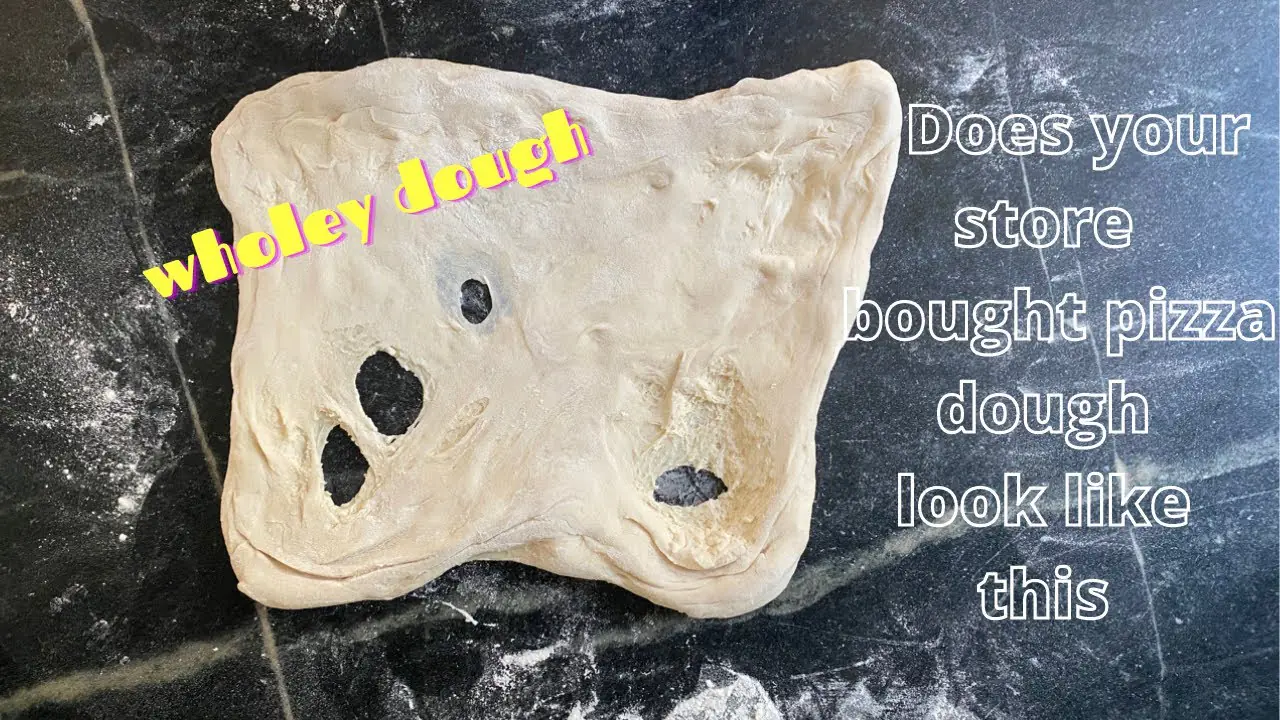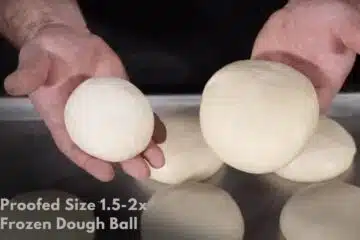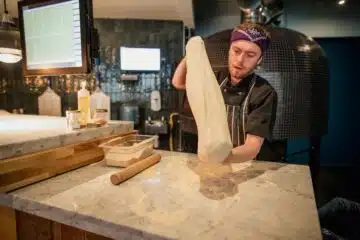Improve store-bought pizza dough by letting it rest at room temperature and kneading it for extra elasticity. Use a heated surface and steam for a crispier crust and better rise.
Pizza night at home, you just got an upgrade with these simple tips to enhance your store-bought pizza dough. No longer settle for a flat, lifeless base when you can achieve a pizzeria-quality crust right in your kitchen. Preparing a memorable homemade pizza doesn’t mean you have to start from scratch; store-bought dough can serve as an excellent canvas with just a touch of artisanal flair.
All you need are a few techniques to transform that ready-made dough into a delectable masterpiece. So grab that dough from the refrigerator, and let’s give it the makeover it deserves, ensuring your next pizza is the highlight of your home-cooked meal.
Getting Started With Store-Bought Dough
Transforming store-bought pizza dough into a delicious meal is easy and fun. Start with quality dough and the right tools to create a masterpiece from the comfort of your home. This guide will help you step up your pizza game using a few simple tips and tricks.
Choosing The Right Dough
Choosing the right dough is the first step to a perfect pizza. Look for dough that is fresh and has a good stretch to it. It should smell slightly yeasty and have a soft, pliable texture. Different types of dough can include classic, whole wheat, and gluten-free options. Pick one that suits your taste and dietary needs.
- Classic dough – rich in flavor, ideal for traditional pizza.
- Whole wheat dough – a healthier choice with a nuttier taste.
- Gluten-free dough – perfect for those with gluten sensitivities.
Essential Tools For Perfect Dough
Some essential tools are necessary to work with your dough. A good rolling pin helps flatten the dough. A pizza stone ensures an evenly cooked crust. A pizza cutter will give you the perfect slice.
| Tool | Use |
| Rolling Pin | Flatten and shape the dough. |
| Pizza Stone or Steel | Crisp crust at high temperatures |
| Pizza Cutter or Knife | Neat and easy slicing |
Remember to preheat your oven with the pizza stone inside. This step will give you a crispy base every time. Armed with the right approach, even store-bought dough can yield impressive results!
Before You Begin
Want to turn a simple store-bought pizza dough into a masterpiece? Perfect pizza begins with the base. Understanding and prepping your dough is key.
Decoding Dough Labels
Pizza dough from the store has secrets. Read the label. Find clues on yeast, flour types, and expiration dates. Choose dough based on these details:
- Yeast: Active for the rise; check for freshness.
- Flour: All-purpose or bread? Depends on crust preference.
- Expiry: Freshness matters for quality and safety.
Taking Dough To Room Temperature
Room-temperature dough is best for pizza magic. Cold dough won’t stretch well and can tear. Follow these steps:
- Remove the dough from the fridge.
- Could you keep it in the bag?
- Set it on the counter.
- Wait for 30 minutes.
Dough ready? Great! Now, shape, top, and bake your delicious pizza!
Kneading Techniques
Turning store-bought pizza dough into a masterpiece starts with kneading. The right kneading techniques can transform dough, giving your pizza a professional-quality texture. Let’s dive into how you can elevate your pizza with a touch of science and a bit of elbow grease.
The Science Of Gluten Development
Gluten forms the backbone of any great pizza dough. It provides elasticity and strength. When you knead dough, you’re essentially training the gluten to do its job.
- Kneading aligns and strengthens gluten strands.
- Creates a flexible and chewy texture
- Improves gas retention, leading to a better ride
By using the correct kneading method, you ensure the gluten in your store-bought dough achieves its full potential.
Hand Kneading Vs. Machine
| Hand Kneading | Machine Kneading |
| It gives you full control of the dough texture | Consistent and can save time and effort |
| It allows you to feel the dough as it develops | Best for large batches of dough |
| It may be therapeutic and rewarding. | Certain machines have programmable settings. |
Hand kneading can be fun and is perfect for customizing small dough batches. Machine kneading is about convenience. Machines achieve uniform gluten development. Consider dough quantity and personal preference when choosing your method.
Dough Enhancement
Enhancing store-bought pizza dough transforms an ordinary pie into a culinary masterpiece. This section focuses on dough enhancement, which includes a few simple tweaks that will elevate the flavors and texture of any pizza dough. By infusing flavors and adjusting hydration levels, one can customize their pizza base for an unforgettable baking experience.
Infusing Flavors Into Dough
Elevate your pizza experience by infusing the dough with herbs, spices, or oils. This adds a unique twist to the crust’s flavor. To begin, knead in your desired flavorings gently, ensuring they’re evenly distributed. Here are some tips:
- Herbs: Mix dried oregano or basil for a classic Italian taste.
- Spices: Add garlic powder or crushed red pepper for heat.
- Oils: Blend in a touch of olive oil infused with rosemary.
Adjusting Hydration Levels
The key to a perfect pizza dough lies in its hydration. Adjusting the water content can make the dough more tender or crispy. Increase water for a chewier crust, and reduce it for a crispier bite.
Here’s a quick guide:
| Dough Type | Hydration |
| Crispy Crust | Reduce water by 1-2 tablespoons. |
| Chewy Crust | Increase water by 1-2 tablespoons. |
Remember, always adjust hydration levels slowly. Add water or flour gradually until the desired consistency is reached. This ensures a perfect base for any toppings.
Rise And Resting Tactics
Transforming store-bought pizza dough into a gourmet masterpiece starts with mastering rise and resting. These steps elevate texture and flavor to rival your favorite pizzeria. Bold flavors and perfect chewiness emerge from these simple techniques. Let’s dive into the specifics of timing and fermenting to enhance your pizza dough.
Timing Your Dough’s Rise
Better pizza begins with the rise. Patience rewards you with fluffy, airy dough.
- Remove dough from fridge 1 hour before baking.
- Lay it on a floured surface.
- Cover with a damp cloth to prevent drying.
| Rise Time | Dough Quality |
| 30 minutes | Minimum Rise |
| 60 minutes | Ideal for Good Texture |
| 90 minutes+ | Maximum Flavor |
Rising times can vary, but aim for at least one hour to optimize for texture.
Cold Fermentation For Flavor Depth
Flavor depth comes from cold fermentation. This tactic boosts the taste profile of dough.
- Place dough in a sealed container.
- Refrigerate for 24-72 hours before use.
Benefits of cold fermentation:
- Enhanced flavors: Slow yeast activity deepens taste.
- Complex texture: Dough becomes more workable and stretchy.
Allowing the dough to ferment in the fridge unlocks a new level of flavor. This method takes time, but the results are worth waiting for.
Patience with your dough’s rise and resting transforms your pizza experience. Follow these practices for remarkable results.
Rolling And Shaping Mastery
Transform store-bought pizza dough into a gourmet creation with Rolling and Shaping Mastery. Proper technique matters. It ensures an even bake and genuine pizzeria style. Master these steps for your best homemade pie.
Achieving Even Thickness
Biting into a slice of pizza with the perfect crust thickness is bliss. Let’s make it happen. First, bring the dough to room temperature. It will be easier to work with. Flour the surface and rolling pin. Start from the center of the dough and roll outward. After a few rolls, turn the dough a quarter turn. This keeps the shape circular and the thickness even.
- Bring dough to room temperature.
- Generously flour your surface and rolling pin.
- Start rolling from center to edge.
- Rotate the dough for uniformity.
Creating Authentic Pizzeria Shapes
Shaping the dough like a pro is easy. Form the crust first with gentle pressing. Then, stretch the middle. Aim for that iconic round shape. Tossing the dough isn’t just for show. It stretches the gluten for a light, airy edge. But keep it simple. Use your hands if tossing is hard. A neat round, rectangular, or rustic shape all make a great base.
| Shape | Technique |
| Traditional Round | Press the edges, stretch the center, and toss if able. |
| Rectangular (Sicilian) | Stretch gently to fit a rectangular tray. |
| Rustic/freeform | Let your hands guide the shape naturally. |
Remember, using a rolling pin flattens pockets of air, which can make for a dense crust. For a fluffier edge, hand-stretching is the way to go. Embrace imperfections! They add character.
Toppings And Combinations
Transform your store-bought pizza dough into a gourmet experience with the right toppings and combinations! Dive into a culinary adventure right in your kitchen. Play with flavors and textures for a uniquely delicious pizza.
Balancing Flavor Profiles
Every great pizza tells a story of flavors. Creating a balance is key. Think of your pizza as a canvas. Sweet, spicy, salty, and tangy elements should join in harmony. Here’s a simple guide:
- Sweet: Caramelized onions, pineapple, or balsamic glaze
- Spicy: Jalapeños, chili flakes, or hot sausages
- Salty: Olives, capers, or feta cheese
- Tangy: Goat cheese, BBQ sauce, or sun-dried tomatoes
Focus on fresh ingredients for a vibrant, flavorful bite. For example, pairing spicy pepperoni with a drizzle of honey can offer the perfect sweet and spicy duo.
Layering Ingredients For Optimal Cooking
The order in which toppings are placed on your pizza can make or break the cooking process. Adequate layering ensures everything cooks evenly. A tried-and-true sequence is:
- Sauce: Spread it evenly, leaving the edge bare for the crust.
- Cheese: Choose a melty cheese as your base layer.
- Vegetables/Fruits: Add these on top of the cheese so they cook well.
- Meats: They should be on the top for proper cooking.
Remember, too many toppings can lead to a soggy pizza. Stick to an amount that allows the pizza to cook thoroughly. Chicken, red onions, and BBQ sauce; mozzarella, basil, and tomatoes; or mushrooms, spinach, and ricotta make balanced, delectable layers.
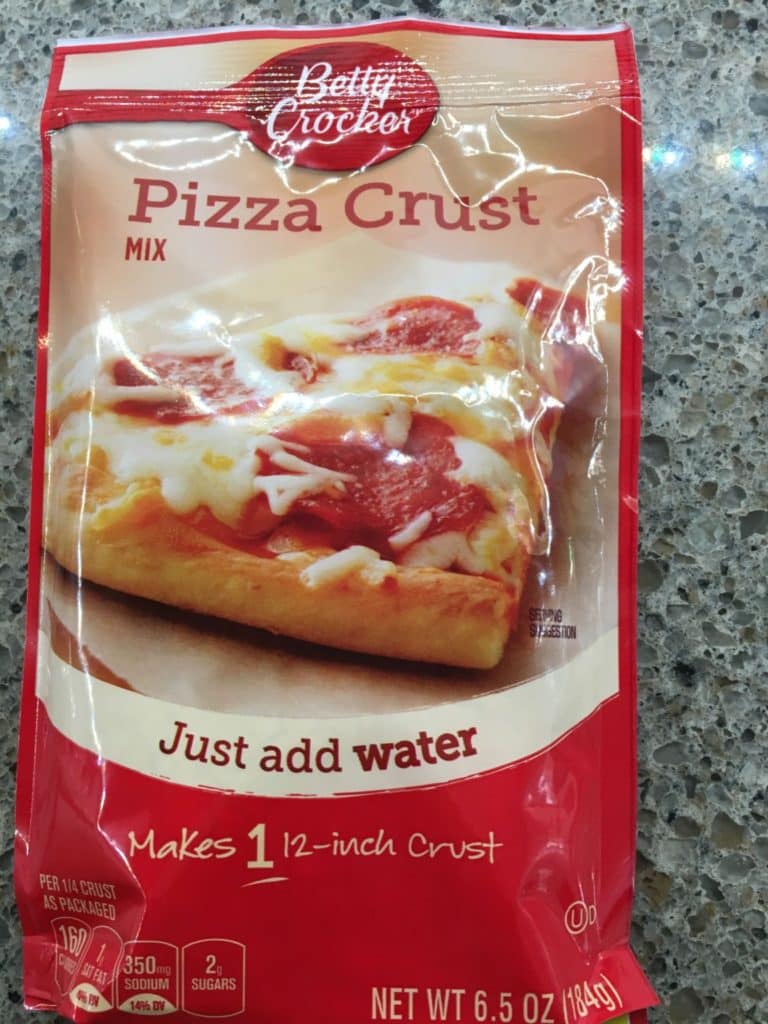
Credit: iowafoodguy.com
Baking The Perfect Pizza
Imagine biting into a slice of pizza that’s just like the one from your favorite pizzeria. Now, you can make it happen right in your kitchen—the secret lies in how you bake your pizza. Starting with store-bought dough does not mean you compromise on quality. With the right approach, your homemade pizza can taste as if it came straight from Italy.
Selecting The Right Temperature And Surface
The foundation of a great pizza is a perfectly baked crust. It should be crispy on the outside and chewy on the inside. This balance begins with the right temperature and surface. Proper heat is crucial, as is the platform on which you bake your dough.
- Preheat your oven to a high temperature. A range of 450°F to 500°F works well for most doughs.
- Use a pizza stone or steel. They retain heat and give your pizza a fantastic crust.
- Allow the baking surface to heat for at least 30 minutes before cooking.
Ensure the oven reaches the desired temperature before you place your pizza inside. A high temperature will give the dough the quick, intense heat it needs to puff up properly.
Monitoring Baking Time For Crispiness
Every second counts when baking pizza. If you have too little time, your pizza could be doughy. Too much time, and you risk burning it. Monitoring your bake time ensures a crispy, delicious result.
- For thin crust, bake for 5-7 minutes.
- For a thicker crust, bake for 7-10 minutes.
- Look for golden-brown edges and cheese that’s bubbling.
Avoid opening the oven frequently, as this lets out heat and can affect the crispiness of your dough. Instead, use an oven light and window to check the progress.
Remember, each oven is different. Start checking your pizza a few minutes before it’s expected to be done. Make adjustments based on your specific oven and preferences.
Finishing Touches
Finishing Touches can elevate simple store-bought pizza dough to a masterpiece of home cooking. Think of it as adding a personalized signature to your culinary creation. With a few expert tweaks, your dough will boast flavors and aesthetics akin to pizzeria quality.
Herbs And Oils For Enhanced Aroma
Infusing your pizza with a tantalizing aroma starts with selecting the right herbs and oils. Brushing the crust with a touch of olive oil gives it a crispy edge and rich flavor. Sprinkle chopped fresh herbs like basil, oregano, or rosemary before baking to unlock their full fragrance. Here are the best herbs to use:
- Basil – Sweet and peppery, perfect with tomato-based sauces
- Oregano – A classic pizza herb with a warm, aromatic taste
- Rosemary – Offers a woody scent and lemon-pine flavor
Slicing Techniques For Presentation
A visually appealing presentation starts with expert slicing techniques. Ensuring each slice is equal shows attention to detail and care for each guest. Here’s a simple guide:
| Pizza Size | Slices |
| Small (8-10 inches) | 6 slices |
| Medium (12 inches) | 8 slices |
| Large (14+ inches) | 10 slices |
For a professional touch, use a sharp pizza cutter or a chef’s knife. Press down firmly and slice in a swift, single motion to avoid dragging the toppings.
Common Mistakes To Avoid
Who doesn’t love a good pizza night at home? Upgrading a store-bought pizza dough can turn a good evening into a great one! Yet, it’s not uncommon for pizza lovers to hit a few bumps in the road while prepping their homemade masterpiece. Steering clear of these common mistakes is essential for anyone looking to perfect their pizza-making skills.
Overworking The Dough
One of the first pitfalls is overworking the dough. Pizza dough needs a tender touch. Too much kneading or rolling can make the dough tough. Here’s what to remember:
- Handle with care: Gently stretch the dough by hand.
- No rolling pins: Avoid them to keep the dough light and airy.
- Resting is crucial: Let the dough sit to relax the gluten.
Miscalculating Toppings And Sauce Quantities
Another common hurdle is miscalculating toppings and sauce quantities. Less is more when it comes to topping a pizza. Here’s how to get it right:
| Toppings | Recommended Amount |
| Sauce | 1/4 cup per 12″ pizza |
| Cheese | 1 to 1.5 cups per 12″ pizza |
| Other Toppings | 1/4 cup per topping for 12″ pizza |
Remember, adding too much sauce or cheese makes for a soggy crust, while too many toppings can lead to undercooked patches. Balance is key.
Beyond Pizza: Other Creations
The versatility of store-bought pizza dough extends far beyond the traditional pie. With a dash of creativity, the same dough can transform into a multitude of delicious treats. From savory pockets filled with gooey cheese and hearty fillings to sweet, delectable dessert options, the possibilities are seemingly endless. Explore these inventive ideas to elevate your dough into mouthwatering creations.
Calzones And Strombolis
Calzones and Strombolis are perfect for a twist on the classic pizza night. Both boast a similar appearance but differ slightly in their preparation.
- Calzones: Half-moon shaped, filled with cheese, meats, and vegetables, and sealed with a fold.
- Strombolis: Rolled up like a burrito, with layers of toppings and sliced into portions after baking.
Try these simple steps to make your own:
- Preheat the oven to the temperature specified for the pizza.
- Roll out the dough into a thin sheet.
- Add your favorite toppings – remember not to overload them.
- Fold or roll the dough, then crimp or pinch the edges.
- Bake until golden brown, and enjoy!
Dessert Pizzas And More
For those with a sweet tooth, dessert pizzas offer a delightful spin on this doughy canvas. Spread with hazelnut chocolate, a sprinkle of cinnamon sugar, or a dollop of jam – your dessert pizza can be as unique as your taste.
| Topping | Instructions | Baking Time |
| Nutella and Strawberries | Spread Nutella and top with sliced strawberries before baking. | 10-15 mins |
| Cinnamon Sugar | Brush with butter, sprinkle with cinnamon sugar, and bake until crisp. | 12-18 mins |
| Cheese and Honey | Add a soft cheese like ricotta, and drizzle honey post-baking. | 15-20 mins |
But don’t stop there – twist the dough into breadsticks, fold it over to create pocket sandwiches, or form it into dinner rolls. Pizza dough holds a world of culinary potential, so start experimenting and enjoy your homemade delights.
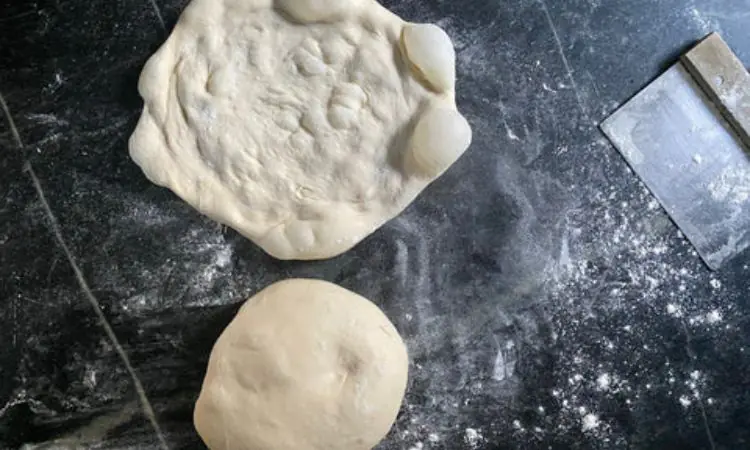
Storing And Reusing Dough
Many pizza lovers agree that the secret to a great pizza starts with the dough. Store-bought dough offers convenience, but properly storing and reusing dough can elevate your pizza experience.
Best Methods For Dough Storage
Proper storage is key to keeping dough fresh and ready to use. Follow these tips:
- Refrigeration: Wrap the dough tightly in plastic wrap. Use within 5 days.
- Airtight Containers: Store dough in containers with tight-fitting lids.
- Freezing: Dough can be frozen for up to three months. Thaw overnight for best results.
Revitalizing Frozen Dough
Don’t let frozen dough go to waste. Bring it back to life with these steps:
- Thaw: Move the dough to the fridge 12 hours before baking.
- Room Temperature: Let the dough rest on the counter for 30 minutes.
- Knead Gently: Rediscover its elasticity by kneading it lightly.
These methods ensure your dough bakes perfectly every time.
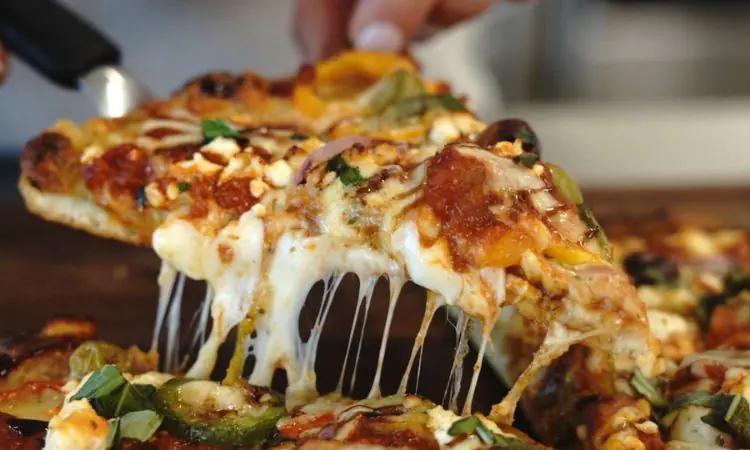
Frequently Asked Questions
How Can I Improve My Packaged Pizza Dough?
To enhance your packaged pizza dough, let it rise longer to improve texture. Add garlic powder or Italian herbs for flavor. Preheat the baking sheet for a crisper crust. Roll the dough thin for a crunchier base. Brush olive oil on the edges for a golden finish.
How To Spruce Up Store-bought Pizza Dough?
Spruce up store-bought pizza dough by letting it rest at room temperature, drizzling with olive oil, and adding fresh herbs. Stretch it by hand for a better texture. Top with high-quality cheese and ingredients before baking for a homemade touch.
What Can I Add To Pizza Dough To Make It Taste Better?
Enhance your pizza dough by adding Italian herbs, garlic powder, a pinch of sugar, or some grated Parmesan cheese for extra flavor.
How Do You Deal With Store-Bought Pizza Dough?
Let your store-bought pizza dough reach room temperature before rolling it out for even cooking. Pre-bake the dough at 475°F for 3-5 minutes, add toppings, then finish baking until golden brown. Use flour to prevent sticking and achieve that perfect crust.
Conclusion
Elevating store-bought pizza dough is simpler than you might think. With a few tweaks, like proofing and seasoning, your pies will taste homemade. Remember, quality toppings and a hot oven are your allies. Now, go forth and bake a pizza that rivals any pizzeria’s offering.
It’s time to impress at your next pizza night!

As the author of the “Ultimate Pizza Guide: Recipes, Tips & Secrets Revealed,” I’m dedicated to sharing my love for pizza and empowering others to create delicious homemade pizzas with ease. Join me on a journey to uncover the secrets to perfecting your pizza game!
